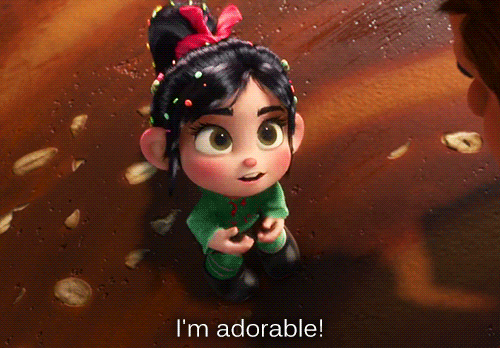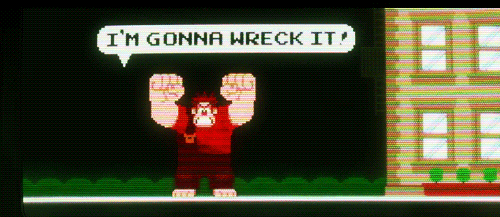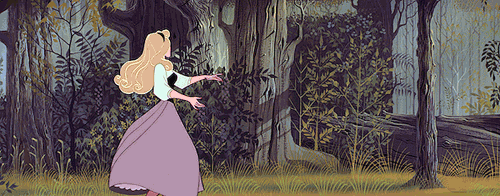Link
1 note
·
View note
Link
1 note
·
View note
Text
~A Reflection~
Spending a semester re-watching and analyzing Disney movies has definitely given me a new perspective on the corporation and the implications of its power over young, formidable minds. I had previously never questioned why I loved the Disney movies that I did; I now think back and realize that the movies I loved both reflected everything that was wrong with society and my naïve optimist that prevented me from believing that to be the case. I never took the time to actually understand what I was watching, and I don’t even know if or what stereotypes and prejudices I may have internalized while indulging in Disney movies. I just wanted to be a princess; I wanted to be Cinderali, as my dad used to call me. Every princess had her prince, at least while I was growing up, and I didn’t pay attention to anything.

I now understand Disney to be so much more than a series of happily-ever-after’s, especially the newer phenomenon of including more dynamic characters. While love interest and romance may not be at the center of every Disney film now, there has yet to be a film that lacks a happy ending for the protagonist(s). Growing up, I believed in the happily-ever-after, and, honestly, I’d be lying if I said that part of me was completely gone. I can’t say what I may have internalized regarding race or gender stereotypes, but I know that the optimism associated with believing in the possibility of a happily-ever-after has been engrained in me, thanks to Disney, and I don’t think I’d have it any other way. Disney gave me something to believe in.

As a white, blonde female, I was continuously exposed to princesses I could look up to and identify with in terms of appearance, especially Cinderella. I spent the better part of my childhood wishing upon a star to one day find my prince that would whisk me away to my happily-ever-after. I never really thought about how that depicts women and the implications of that on gender roles. Women should have more power than that and should not be spending their lives waiting to be saved. Women should not need men. Women should not be confined to household chores or other womanly duties. But that is the image we are exposed to all too often in Disney films.

Belle is deemed as weird or atypical for finding pleasure in reading and learning. Ariel is taught to use her body to seduce Prince Eric, as guys don’t like women who speak, anyway. All of the princesses illustrate unrealistic body images. Every princess sacrifices anything and everything for a man. Only the ugly and masculine females can be powerful. Every princess needs a man.

There is so much wrong with the messages Disney conveys to the audience and gender roles are only the beginning of it. This semester I only began to realize all of the issues with Disney regarding race and gender, and how Disney uses villains to depict negative stereotypes and alienate certain populations. While Disney is making some moves towards a more progressive future to reflect the changes in society, it is far from enough and I don’t know when it ever will be.
1 note
·
View note
Link
0 notes
Text
~Maleficent~
Mixed feelings. On one hand, I grew rather bored waiting for the plot to pick up. On the other, I appreciated the storyline. Providing context for Maleficent ultimately demonstrated that she, in fact, is not the villain; she is a victim. I discuss that scene. Maleficent was drugged and woke up in pain, betrayed, enraged, and powerless. She trusted Stefan and he abused that for power – to become king. Many argue that this scene is intended to resemble, or represent, rape. Maleficent’s body was defiled without her consent or consciousness by a man she knew, potentially loved, and trusted. Stefan took a piece of her, just as a rapist takes something, some of the life, away from the victim. He was supposed to kill her to become king, but he does worse: he rapes her identity, her power.

Although I can understand that connection and appreciate what Disney attempted to do in writing that rape scene, I do not necessarily agree with its existence in the film. To begin with, that is rather dark for a Disney film. In addition, a child is most likely not going to understand that or make the connection upon watching the movie, so what’s the point? I would like to know why Disney would have attempted to represent a victim’s sensitive and personal response to rape. All little kids will understand is that he took her wings and that hurt her. They can clearly see her devastation and pain, but what they can’t understand is how that pain can reflect something like rape where the damage is not always visible. I understand that rape has permeated this society to no end so I guess it makes sense that Disney would reflect that prevalence by including it in a film, but I still don’t agree with that decision. It is too sensitive of a topic and directed towards an improper audience.

I also want to touch on the fact that her perpetrator is a man she not only knew, but grew close to and trusted. A high percentage of rapes occur in a situation in which the victim knows the attacker, and rape within a relationship or marriage is definitely still rape, so while I agree that it is an important message, I don’t know that I would want children watching someone be assaulted by a loved one. A child may not understand why someone would do that to someone they seem to care about, and misinterpret that to struggle with trusting others. There is a delicate balance between trust and skepticism that must be treaded very carefully in children’s films because no one knows what they might absorb.

Maleficent opposes the typical Disney princess happily-ever-after to the extreme. Not only does Maleficent’s true love’s kiss wake Aurora from her slumber, but that of the prince fails. Similar to Frozen, familial or close enough to familial love takes precedent over romance, but Maleficent takes that sentiment one step further by showing failed romances, both between Maleficent and Stefan and Aurora and the prince, and promoting Aurora to Queen without a king. However, I am still hesitant to deem Maleficent to be an empowering movie for women given the pseudo-rape.

1 note
·
View note
Text
~Wreck-It-Ralph~
“Why are you smiling so much – it’s weird,” my friend commented to me after I finished watching the movie. It was the cutest movie ever and I couldn’t believe I had never seen it before. Although the premise seemed rather odd – a movie based on video game characters coming to life, living the games humans think they are playing – I absolutely loved the overall message and storyline. All Ralph wanted to do was be a hero; he didn’t choose to be the villain.

In many Disney movies, the viewer is given no context regarding the “villain,” so there is no ability or desire to empathize with him/her. However, because the audience sees Ralph’s sad life and understands him to be unhappy with his role and how he is treated by others, he evokes compassion. He is written to be a dynamic character, not just the “bad” guy. His wrecking is simply the role he plays in the game, which the characters come to understand by the end of the film. When Ralph sets out to win his medal and there is no one to wreck things in the game, the other townspeople come to understand that they need Ralph. This sends some key larger messages to the audience.

First, this speaks to the idea that without bad, there is no good. Without Ralph wrecking things, there was nothing for Felix to fix – you need the bad to experience good because without one, the other can’t be known. Everyone has good days and everyone has bad days. It is important for children to understand this message that perfectionism isn’t realistic; struggle and failure are part of life, and that’s why it is important to surround yourself with people who can fix what you break, even when it’s yourself.

Wreck-It-Ralph also touches on the idea of not judging a book by its cover, as seen by both Ralph and Vanellope. Both of these characters show that appearance can be deceiving; Ralph seems like the villain when, in reality, he is just a good guy born into that role, and Vanellope appears to be a glitch when she is actually a princess. That sends a very important message to children about both treating everyone with respect and finding oneself. Sidebar: Ralph and Vanellope’s relationship was the cutest thing and made me so, incredibly happy. I love how they encourage and support each other to reach their goals and they really care about one another. Also Vanellope is just adorable.

All in all, Wreck-It-Ralph is a great movie that sends very positive messages to the viewers. It also features a villain in (slight) disguise, unlike the typical Disney movie. King Candy, or Turbo, catches everyone by surprise as he is the one who made Vanellope a glitch, stripping her of her status out of jealousy. This movie is part of the new wave of Disney villain that is not overtly evil or provide any physical indication of his ulterior motives, unlike past villains like Scar or Jafar, which is probably best for everyone involved.

2 notes
·
View notes
Text
~Frozen~

It has really not been a very long time since I have seen Frozen. It may actually be one of my favorite Disney movies. I remember one night during my Junior or Senior year of high school I was watching the sing-a-long version of the movie in my family room at home, singing “Let It Go” proudly, when my dad walked in, shook his head in embarrassment, questioned my life choices, and exited the room. I continued singing every word to every song I am proud to know.

The first time I watched Frozen, I was happy that Anna and Elsa got their happy ending, but I was happier that Anna and Kristoff got theirs. I really related to Anna; she is quirky, bubbly, energetic, cares very deeply and passionately about people, and is just looking for companionship. As an only child who grew up with two working parents, I was always looking for someone to build a snowman with me, granted Anna had Elsa to sing to and I only had my dog. Nonetheless, I always rooted for Anna more so than Elsa, which is still true now. However, I now recognize love not to be what I want Anna to have most. Frozen is often praised for being a Disney princess movie with no prince. But, actually, that’s false and that makes me mad. Elsa is a Queen without a King: true. Anna is a princess who finds her prince (Kristoff, not Hans): also true. If this movie is supposed to defy gender norms and be about how sisterly love is more important than romance, then Anna should not have required Kristoff’s help and they should not have fallen in love. Yes, it adds the exciting love element to the story and, as a young girl, like I said, that made me happy. But looking back, that defeats the proposed purpose of the movie.

Now let’s talk about Prince Hans. He may have been the biggest plot twist when I first saw Frozen. I thought love was an open door? Apparently not. He completely capitalized on and took advantage of Anna’s lack of social interaction and desperation to find someone. I could understand him weaseling his way to the throne as her Prince, but what took me as the biggest surprise was his attempt to murder her (or just blatant disregard for whether she lives or dies)? I understand that it was Elsa who struck Anna’s heart, but Hans was so excited about her death I wouldn’t have been surprised if he somehow was in on plotting the strike. I mean, come on, all she wanted was her true love’s kiss. If he were even remotely a good human, he could have kissed her and seemed disappointed not to be her true love when it didn’t save her rather than laughing in her face. That was just rude and unnecessary. But, at the end of the day, Anna and Elsa were able to save one another and that’s better than any romance – even Anna and Kristoff.

1 note
·
View note
Link
0 notes
Link
1 note
·
View note
Text
~The ‘Feminist’ Disney Princesses~
https://www.buzzfeed.com/beatrizserranomolina/all-your-favorite-disney-princesses-ranked-from-least?utm_term=.mkj20KAP3#.ccX0kA3Kd
This article ranks fifteen princesses from least to most feminist as follows: Aurora, Snow White, Cinderella, Ariel, Belle, Rapunzel, Jasmine, Tiana, Merida, Esmeralda, Megara, Pocahontas, Elsa, Mulan, and finally, Moana. As I don’t quite know who Esmeralda and Megara are, and I have yet to see Disney’s Brave, I can’t really speak to their rankings. Removing them from the rankings, I still don’t totally agree with the supposed feminist nature of some of these films.

Let’s begin with the bottom of the list mainly comprised of the original Disney princesses of the 20th century: Aurora, Snow White, Cinderella, Ariel, Belle, and Jasmine. The list provided nearly matches the order of release of these films, which I don’t believe is a coincidence at all. Aurora, Snow White and Cinderella all reflect the stereotypical gender roles of the mid-1900s, as they are shown to be weak and require a man to save them from either an eternal slumber or life in servitude.

The 1990’s (and 1989), however, produced a new wave of Disney princesses: Ariel, Belle, and Jasmine, who begin demonstrating a slightly more feminist view. They each defy or reject the expectations of prominent male figures in their lives, whether it be their father or a potential suitor or both, illustrating a newfound female independence unseen in previous Disney films. However, as the premise of these princess movies is still finding love and marriage to a prince, they still have a long way to go. I would argue, however, that Jasmine is more feminist than the rankings necessarily contend her to be; she rejects the arranged marriage proposals and instead forces the Sultan, her father, to change the laws so that she can marry for love, rather than money or power, which is a very important message to send to the young, female population.

Now to address the top half of the rankings. Feminism has to do with supporting women’s rights being equal to those of men, not whether women need men or love to survive. Just because Elsa and Moana don’t have love interests does not make them feminist, and neither does Mulan demonstrating she is capable of doing what a man can do and proving gender is a social construct. I agree that out of all the Disney princesses she may be the most feminist thus far given her adventurous nature and the fact that she saves her people, but at the same time, she requires the help of a man to do so; so, how feminist is Moana really? Elsa being a Queen without a king, I admit, is rather feminist. But, all she does is run away from her problems, as if she is unfit to be Queen, and therefore contradicting the feminist nature of her ruling a nation without a prince.

Basically, even the most ‘feminist’ Disney princesses aren’t all that feminist. The corporation has a lot of work to do to produce a film with a princess, or any female lead, that supports and demonstrates equal rights for men and women, properly rejecting gender roles.
0 notes


































